draw different perspectives 3d art
Tools Y'all Need
How to Depict in Perspective
The new Perspective Drawing feature, introduced in CorelDRAW 2021, enables you lot to create 3D-looking objects in one, ii, or 3-point perspective, without needing to set complex grids. In this tutorial nosotros volition show y'all how to work with the perspective field and draw straight in the plane you lot want, or place existing orthographic objects onto a perspective plane.
Click on whatever of the images beneath to view full-size.
Introduction to Perspective Drawing
Permit's offset with an overview of the perspective views.Ane-point perspective, with its single vanishing bespeak, tin be used to simulate a view along a road, in which everything shrinks toward a betoken in the distance.

Ii-point perspective tin can be used to show a view from a corner, such as in this instance of buildings that each compress toward vanishing points off to the side.
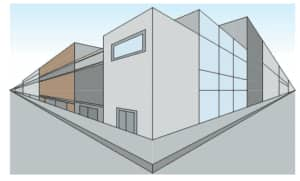
Ii-point perspective tin can also be used to showcase a packaging design.

Iii-point perspective is by and large used for more dramatic views that focus on the top of an object that vanishes toward the lesser, or vice versa – to show how objects look from beneath.
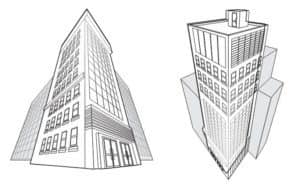
The following four objects demonstrate the four types of perspective cartoon: i-indicate perspective, ii-signal perspective, and ii versions of iii-point perspective –bird's-heart view andworm's-eye view. Perspective objects are in their own groups, and multiple different perspective groups can exist in the same document.

When a perspective group is selected, theEditpush button appears at the acme left, and theEdit Perspective Group pick is likewise available in the object's context (right-click) menu.
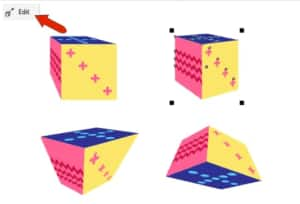
When you enter editing mode for a perspective object, thePerspective Field is displayed. The perspective field can be selected and enlarged equally needed, to display the horizon line and both vanishing points of this two-point perspective object.
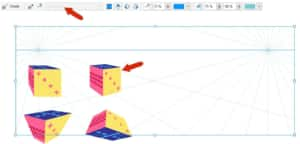
How to Create Perspective Drawings
There are two workflows yous tin utilize to create perspective drawings: moving existing objects onto perspective planes; and drawing objects from scratch in perspective.
Method i: Moving Objects onto Perspective Planes
In this instance, three rectangles will be used to build a perspective cube. Each rectangle is part of a group, which also contains the objects inside the rectangle. When moving objects to a perspective plane, information technology's much easier to work with a single group than with dissever, private objects.
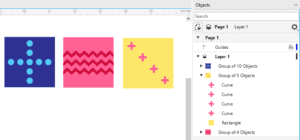
Go toObject >Perspective >Draw in Perspective. On the perspective toolbar, choose a perspective type from theType list box. We are starting withOne-point perspective.

Now you can drag to identify the perspective field, or pressEnter to make full the entire folio.
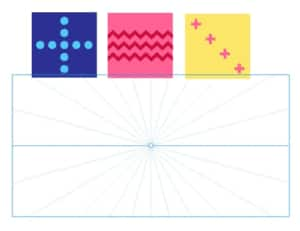
You tin can move the vanishing point, enhance or lower the horizon line, and adjust the density of perspective lines.
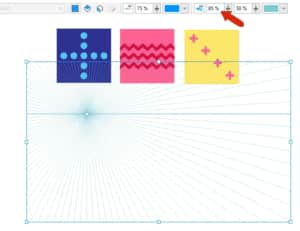
The perspective toolbar as well has options to toggle on and off the horizon line and perspective lines, change their colors, or adjust their opacity. Camera lines are off by default but can be turned on, and the perspective field can be locked, to preclude whatever adventitious changes.
UnderSnap To on the standard toolbar, make sure that snaps are enabled forObjects, and y'all tin can also turn on snaps forPerspective Lines.
The yellowish group volition be the front of the cube and volition remain in the orthographic plane. All perspective objects need to be moved to a perspective plane, so right-click on the object and chooseMotion to Plane >Move to Orthographic Aeroplane.
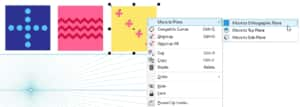
Select the object and move it into the perspective field, below the horizon line.

The pinkish group volition become the side of the cube, and then right-click on it and cullMotion to Aeroplane > Move to Side Aeroplane. The perspective lines at present follow the side plane, and when moving this object, its edges follow the perspective lines.
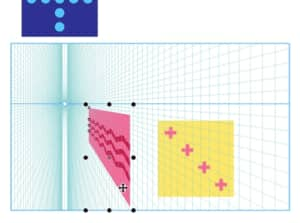
You can employ the handle on the lower front corner of the rectangle to line upward this corner with the yellow front face.
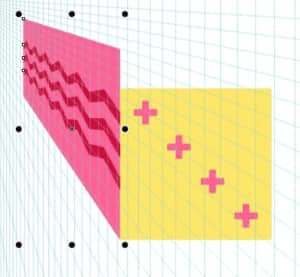
This side object is a bit besides large, so we tin can use top corner handle to scale it uniformly inward from the reverse corner.
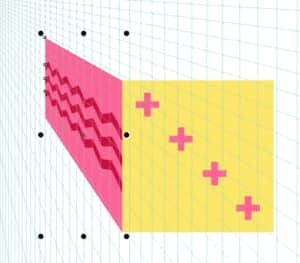
The blue group will keep pinnacle, so we correct-click on it and chooseMotility to Plane >Move to Meridian Airplane. After moving the object and connecting the corner node, nosotros tin use the side handles to resize in two directions.
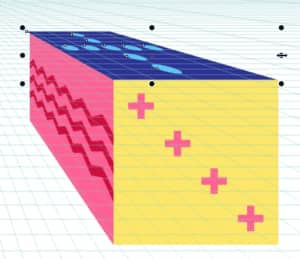
Selecting an object on a perspective plane activates that plane and its perspective lines, so it is easy to adapt, such as resizing the side and top objects to make them a chip shallower.
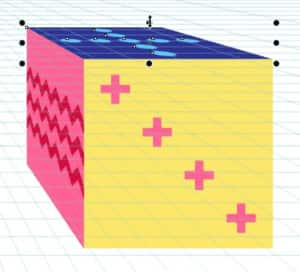
When all looks good, click theFinish button to go out perspective drawing fashion.

This entire cube is now its own perspective group, comprised of the three original square objects.
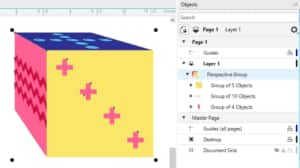
When a perspective group is selected, you can click theEdit push button in the superlative left corner, to render to editing in perspective.
A perspective grouping tin can be moved or scaled uniformly, merely other tools are grayed out, such asRotate andMirror. This is because those tools would pause the relationships between objects on different planes.
Finally, if you wanted to manipulate the various objects inside the perspective group, you'd first have to pause apart the perspective group, and so ungroup.
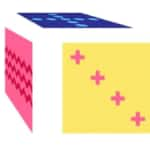
Method 2: Drawing Perspective Objects from Scratch
Next, we'll depict directly in perspective. In a blank document, become toObject >Perspective >Draw in Perspective, and chooseTwo-point from theType list.
PressEnter for a full-page perspective field, heighten the horizon line, and increase the field density.
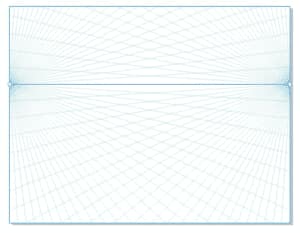
To beginning drawing on the right side, click theRight icon.

This changes the perspective lines to match the right plane. Now with theRectangle tool, describe the right side of the box.
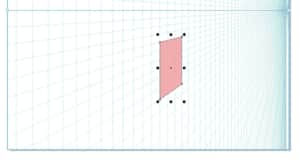
The side by side rectangle volition be forth the left. Y'all tin snap to one corner and arrange the other edge to fit.
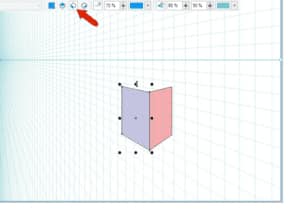
Finally, add the peak rectangle – in this aeroplane you can snap to both corners.

For uncomplicated vector objects, such as a rectangle, ellipse, or star, you can first activate the plane, then draw directly in perspective.
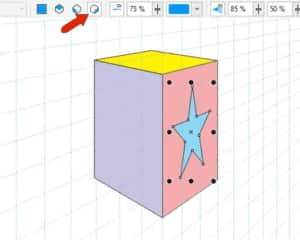
Or y'all can switch to theOrthographic plane to draw the star, then motion the star to the plane where it will go.
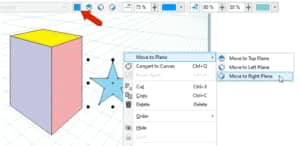
Then you lot tin can move the star into place.
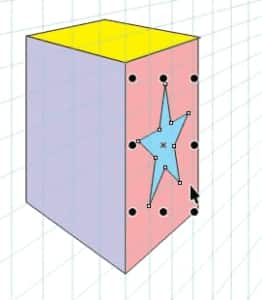
But for more than complex objects, information technology's usually better to piece of work in orthographic view. So with the left side selected, move it to theOrthographic plane.

Now you can add what you want, such every bit text or a logo, or a mutual shape. In this example, the ellipse was added direct to the perspective group because it is a elementary shape. The banner, logo, and text were added outside the perspective group.
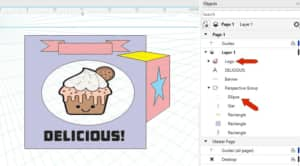
Any objects outside the perspective group must be added to one of the planes. And so with these three objects selected, move them to theOrthographic aeroplane, to match the rectangle on which they're placed.
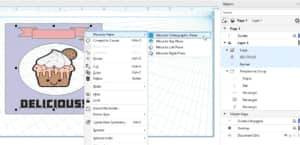
At present these objects are inside the perspective grouping.
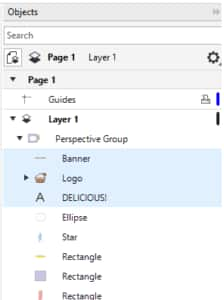
So that the entire side of the box will act as one object, add the rectangle and ellipse to what's selected, and group all objects.
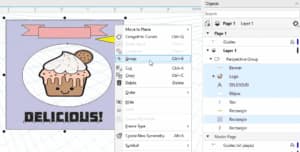
Now y'all tin can movement this entire group to the left plane.
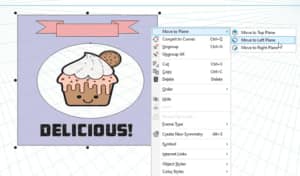
Later clickingFinish to end perspective editing, everything on all sides of the box is in the correct location and orientation.

Perspective Drawing and second Drawing
In some cases, y'all may accept to combine perspective drawing with second cartoon to get the look you want. This instance shows two sides of a carton in perspective, and we want to add together the triangular acme.

You can starting time the superlative part by drawing a rectangle beyond the heart of the box, while in theRight plane.
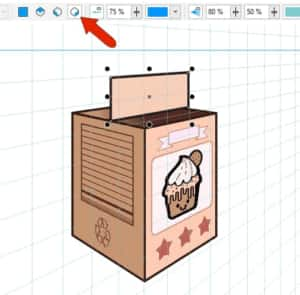
Resize to push this rectangle up a flake, and then that what remains will be the very meridian of the carton.
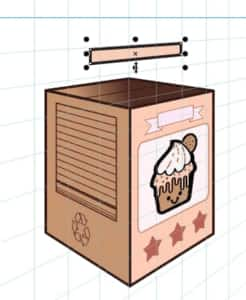
Now switch to theOrthographic aeroplane and utilize thePen tool to create this four-sided shape.
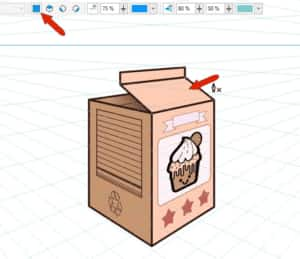
Use the same tool for this pocket-sized triangle in the back.
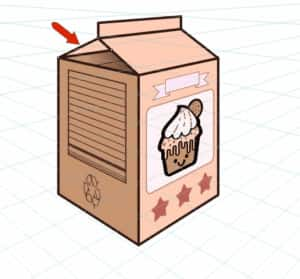
These two closed shapes aren't actually perspective objects, but because they are associated with a plane, they remain inside the perspective group.
You lot can add more than objects to these new faces, using CorelDRAW's rotating and skewing tools to simulate the perspective await.

Source: https://learn.corel.com/tutorials/how-to-draw-in-perspective-in-coreldraw/
0 Response to "draw different perspectives 3d art"
Post a Comment